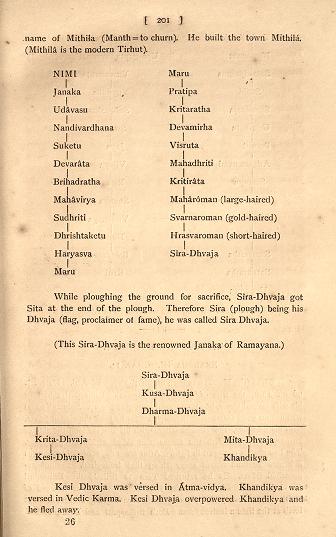Dhrishtaketu

Dhrishtaketu (धृष्टकेतु) was a Suryavansh king of the Kekayas, also an ally of the Pandavas.
Kekayas (केकय) or Kaikeyas were an ancient people attested to have been living in north-western Punjab—between Gandhara and Beas River since remote antiquity. They were the descendants of the Kshatriyas of the Kekaya Janapada [1] hence called Kekayas or Kaikeyas. The Kekayas were often associated with the Madras, the Usinaras, the Sibis etc., and their territory had formed a part of the Vahika country, according to the evidence furnished by Pāṇini [2].
Contents
Ancestry of Dhrishtaketu
Nimi → Janaka → Udavasu → Nandivardhana → Suketu → Devarata → Brihadratha → Mahavirya → Sudhriti → Dhrishtaketu → Haryashva → Maru → Pratipa → Kritaratha → Devamirha → Vishruta → Mahadhriti → Kritirata → Maharoman (large-haired) → Svarnaroman (gold-haired) → Hrasvaroman (short-haired) → Sira-Dhvaja
Geographical Location of the Kekayas
Numerous Puranas include the Kekayas in the list of Gandharas, Yavanas, Shakas, Paradas, Bahlikas, Kambojas, Daradas, Barbaras, Chinas, Tusharas, Pahlavas etc., and call them as a people of Udichya i.e. of northern division or Uttarapatha[3]. The Kekayas are said to have occupied the land now comprised by three districts of Jhelum, Shahpur and Gujrat [4], all in Pakistan.
Traditional origin
Bhagavata Purana states that the Usinaras, the Sibi, the Madras, and the Kekayas were the direct descendants of Yayati's son Anu. Sibi or Sivi is stated to be son of Usinara.
Anu, the fourth son of Yayati, had three sons, named Sabhanara, Caksu and Paresnu. From Sabhanara came a son named Kalanara, and from Kalanara came a son named Srnjaya. From Srnjaya came a son named Janamejaya. From Janamejaya came Mahasala; from Mahasala, Mahamana; and from Mahamana two sons, named Usinara and Titiksu. The four sons of Usinara were Sibi, Vara, Krmi and Daksa, and from Sibi again came four sons, named Vrsadarbha, Sudhira, Madra and atma-tattva-vit Kekaya.... (Bhagavata Purana, 9.23.1-4). [5]
The same tradition is also furnished by other Puranic texts like Vayu Purana and Matsya Purana as well [6]. The Anavas, derived from Anu, were a tribe of the Rigvedic period [7] and are said to belong to the Iranians.
Jat Gotras descended from Dhrishtaketu
चेदि जनपद
चेदि जनपद बुन्देलखण्ड में था। चेदि जाट गोत्र भी है। उस समय वहां पर चन्द्रवंशी शिशुपाल राज्य करता था। ययातिपुत्र यदु के पुत्र करोक्षत्री की परम्परा में शूरसेन राजा हुआ। उसकी पुत्री क्षत्रश्रवा का विवाह चेदिराज दमघोष से हुआ जिनसे शिशुपाल हुआ। नकुल ने चेदि नरेश की पुत्री करेणुमती से विवाह किया। जिनसे पुत्र निरमित्र हुआ। (देखो चन्द्रवंशीय वंशावली)। श्रीकृष्ण जी ने शिशुपाल को मार दिया था। उसका पुत्र चेदिराज धृष्टकेतु पाण्डवों की तरफ होकर महाभारत युद्ध में लड़ा था।[8]
External Links
References
- ↑ Ashtadhyayi sutra VII.3.2.
- ↑ India as Known to Panini, p 54, Dr V. S. Aggarwala.
- ↑ Vayu Purana 1.45.117; Brahmand Purana, 1.2.26.48; Markendeya Purana, 52.37; Matsya Purana (Critical), 113.42; cf Swargaloka of 6.43; Mahabharata (Critical ed) 4.10.47; Brahma Purana 53.14; See: Krfel's text of the Uttarapatha countries of the Bhuvankosha
- ↑ India as Known to Panini, p 52, Dr V. S. Aggarwala; Geographical Data in Ancient Puranas, 1972, p 162, Dr M. R. Singh.
- ↑ [1]
- ↑ Matsya Purana, 48.10-20; Vayu Purana, 99.12-23
- ↑ Political History of Ancient India, p 63, Dr H. C. Raychaudhury
- ↑ Jat History Dalip Singh Ahlawat/Chapter III, Page 290
Back to The Ancient Jats